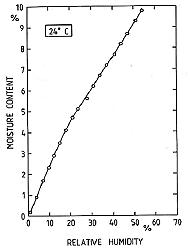 Fig. 22. Equilibrium moisture content of wood vs. relative humidity at 24o C.
Fig. 22. Equilibrium moisture content of wood vs. relative humidity at 24o C.

[<- Previous] [Contents of this lecture] [Next ->]
The varnish on a piano soundboard does not have a significant effect on the tone, as far as I have been able to discover. However, the varnish has a very significant effect on the tuning stability of pianos. Without varnish on its soundboard a piano can go rather quickly out of tune if the humidity should change. This is because the size and weight of any piece of wood depends on the relative humidity and temperature of the air around it. Wood absorbs moisture until the amount in the wood is in equilibrium with the surrounding environment.
 Fig. 22. Equilibrium moisture content of wood vs. relative humidity at 24o C.
Fig. 22. Equilibrium moisture content of wood vs. relative humidity at 24o C.
Fig. 22 shows how much moisture will be in a piece of wood at equilibrium for different values of relative humidity at a temperature of 24o C (75o F) (see Wood Handbook 1987). The amount will be about the same for all species of wood. As you can see, at 50% relative humidity about 9% of the weight of the wood will be moisture. The varnish on a soundboard slows down the rate at which moisture can enter and leave the soundboard, and so lets the piano stay in tune longer. I once gave a copy of this graph to a friend who had just bought a new grand piano. A couple of days later he telephoned, sounding somewhat upset: it seems he had calculated that his new $30,000 piano contained 7.2 gallons (27 litres) of water and that each gallon had cost $229!
[<- Previous] [Top] [Contents of this lecture] [Next ->]
This lecture is one of Five lectures on the Acoustics of the piano
© 1990 Royal Swedish Academy of Music